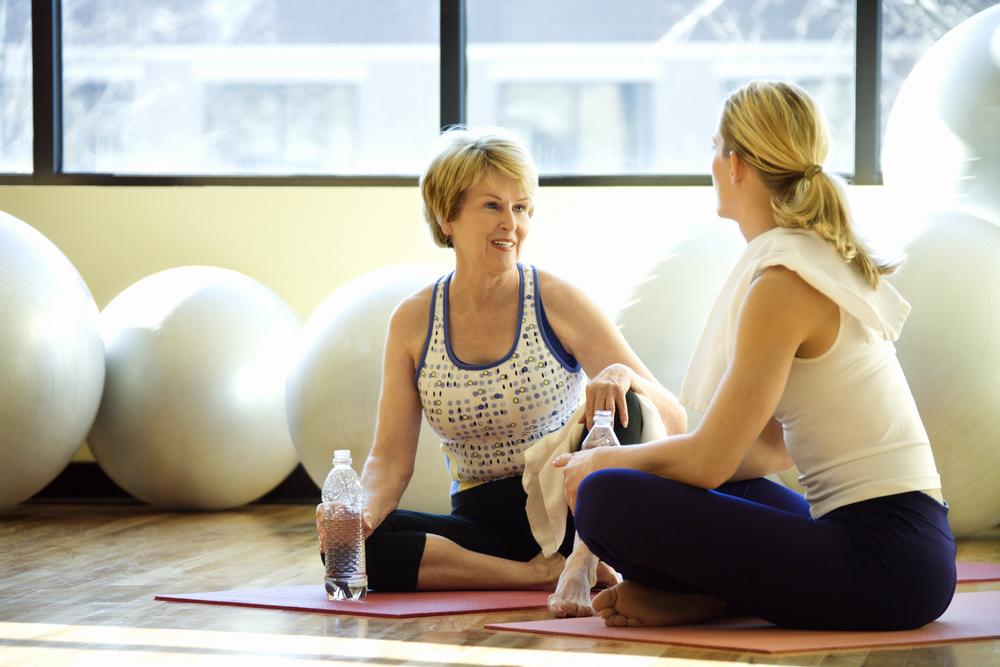We’ve known for some time that the reasons people give for leaving a gym don’t necessarily reflect the actual factors that drove them to leave. Equally, the reasons people quit clubs are generally different from the factors that motivated them to join in the first place, or to stay as a member.
In our recent qualitative research (The Black Report), we asked members what reasons they gave their club for quitting, but also asked them if these were the real reasons they quit their previous clubs. The figures alone would suggest not: for example, the number of people who claimed to be moving house is much higher than the national average, which is actually about 5 per cent of the population annually.
Blaming finances was also a popular reason to give, but not as commonly the real reason for leaving. Of course not all those who claim financial circumstances as their reason for leaving a club are lying: the global economic change has influenced and encouraged members across the board to review the value they feel they’re getting from their club.
However, some individuals have certainly used the struggling economy to their advantage. Respondents in our research explained that clubs put up little resistance to early cancellation of memberships when the media was full of stories of companies closing down and unemployment going up.
“Club staff find it difficult or uncomfortable to discuss the situation when you say you’ve lost your job. You can use that to your advantage,” said one. “All you need to do is time it with a big news story. You don’t even need to be working for that company – you just need to get your timing right.”
Tables 1 and 2 (below) highlight the many discrepancies between given and actual reasons for leaving.
A need for change
When investigating why members actually leave it becomes apparent that, for seasoned exercisers, it’s far more likely that the major factors influencing their decision will be either the way the club operates or a loss of personal motivation.
To stimulate members over the long term, some degree of change needs to be experienced by the member. These changes fall into two major categories: achieving results is the most important, followed by updates and changes to the physical environment.
Members stay when they get results. Simple. They join to achieve physical and psychological changes: the obvious change in shape of their body or its ability to perform at a certain level, and the feelings that accompany these changes – which include more confidence and happiness and lower levels of stress. When these changes are experienced, they stay, as the results are associated with the club.
However, members have many undisclosed expectations about what it will be like when they join a club. They’re full of enthusiasm to begin with and believe that joining a club will lead to a changed life. The gap between what they expect and what’s delivered is often where the major issues lie. When members fail to achieve the changes they expected, they look elsewhere.
So why is there such a gap between expectations and what’s delivered?
First of all, expectations in the early stages of membership regarding frequency of exercise are often much higher than can actually be maintained. Among experienced exercisers, we see a much more realistic approach to visit frequency. These members have already adjusted to the idea that, due to lifestyle commitments, they won’t be able to exercise as often as they would like. Alternatively, they will already have adjusted their lifestyles to fit exercise in on specific times and days.
The challenge for operators is to understand how those members who are unable to attend more frequently are still able to achieve their goals or recognise the change process that’s occurring before they begin to question the value of membership. Some health and fitness clubs seem to rely on encouraging people to purchase personal training to drive through quicker change, but this will not work with a large proportion of members.
As one respondent explained: “You work out for a while and you begin to see changes, but then these changes slow down. You become frustrated, but when you ask for help they try and sell you personal training. You begin to wonder if the programme you started out with has any long-term effect. I asked the question of one of the instructors: ‘Do you know how to help people change without them having personal training?’”
A change of scenery
As previously stated, updates to the physical environment are also important in keeping members motivated. However, operators have been challenged by the economic downturn and rising costs of running facilities, with years of under-investment leading to tired-looking clubs and managers fire-fighting to keep operations running.
Members are therefore beginning to question where their money goes, and why prices continue to rise despite an obvious lack of investment in facilities.
“They haven’t changed anything in here for years; it’s the same all the time,” said one. “They tell you they’re investing a fortune in the clubs and then they just paint everything red. In practice, I’m training on the same stuff we’ve had for years and I’m bored.”
As well as refreshing the exercise environment, operators need to consider that their most valuable members will also need the exercise experience to be refreshed. As one respondent explained: “If you went to the same restaurant every week for three years, in the end you’d get bored with the menu. The staff may be providing a quality of service, but you just fancy something different.”
We may be looking at a situation where three to four years may generally be the limit to which clubs can retain members. Approaches that may combat this include refreshing visuals on walls, organising equipment in ways that grow a member’s experience over time, and replacing activities that are less popular.
That said, the social aspect of being a member is very important. Not all members will want to use their club just as a utility – a place where they train and leave. Some seek a greater experience, wanting to feel part of something. They expect to meet people with common interests and develop friendships with staff and other members (see HCM Feb, p62).
Where this is available through various member-to-staff and member-to-member activities, a sense of belonging develops and members feel they’re part of a club rather than just having access to facilities – and are less likely to leave as a result.
They just don’t care
But when members do decide to leave, it’s generally handled badly. Members interviewed believe operators just don’t care whether they stay or leave – a finding that backs up the recent research conducted for Health Club Management by Leisure-net Solutions (see HCM Jan 14, p62).
Experienced exercisers repeatedly described terminating their memberships with no questions asked – not even an exit interview or any attempt to save them.
“Someone called me once when I quit to ask why I’d cancelled my direct debit. When I told her I’d had enough, she just said ‘oh’. She tried to explain the cancellation policy but made no attempt to understand why I was leaving or to stop me. They made me feel even less valued than before,” commented one survey respondent.
Indeed, experienced members often believe clubs have no interest in them beyond the income they provide. They feel clubs operate in a manner that’s solely based on financial transactions, with no attention paid to whether the member is enjoying the club experience or achieving the results they desire.
Frequency of use
Finally, although it’s already been seen that lack of usage leads to membership cancellation, clubs need to bear in mind that, among experienced exercisers, irregular usage of the club due to work and life commitments may not necessarily lead to cancellation.
Members do not always adhere to the behaviour of exercising at the same time on a certain number of days a week. Those who have been members of multiple clubs, or of the same club for a long period, do not always achieve the recommended frequency of exercise – but they do continue to exercise, and consider themselves exercisers even when there’s an extended break in regular training.
“I’ve been a member of five clubs and I work out around work and family commitments,” explained one respondent. “I mostly do the same type of workouts each time, and when I train regularly, I notice that my fitness changes. But when I’m busy at work or when there’s a lot on at home, I train less. I’ve been training for more than 12 years and I don’t think I’ve strung together more than six weeks of consistent sessions.”
This calls into question the idea that experienced members will use their clubs every week. Being able to predict member behaviour through analytics based on more than just visit frequency will begin to unlock the next wave of strategies that will help to improve member retention.
Until then, we must rely on developing member experiences that are consistently delivered by quality health club staff, providing support and guidance in environments that are refreshed more frequently to reinvigorate the senses, and with exercise programmes and classes that are designed get members the results they’re looking for.























































